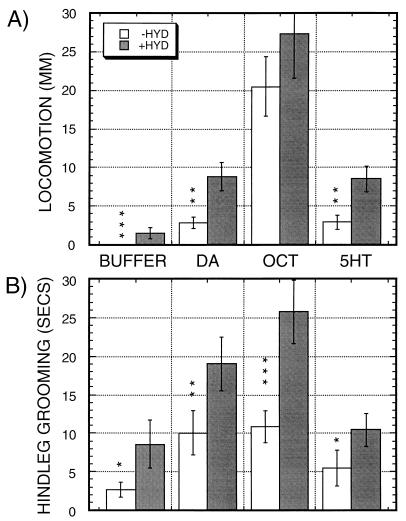Figure 1.
Amines and hydrazaline stimulate locomotion (A) and hindleg grooming (B) in decapitated flies. Locomotion and hindleg grooming was assayed in a 2-min observation time after additions of amines (open bars) or amines in the presence of 1 mM hydrazaline (shaded bars). Solutions added were BUFFER: buffer control; DA: dopamine; OCT: octopamine; 5HT: serotonin. Data show the means ± SEM from n = 30 observations for each condition, except for n = 90 for those exposed to buffer or buffer plus hydrazaline. Significance levels for differences as a function of hydrazaline are indicated by asterisks, using square root transformed datasets for calculations (see Materials and Methods). ∗, P ≤ 0.05; ∗∗, P ≤ 0.005; ∗∗∗, P < 0.0005. Significance of the stimulation of locomotion by hydrazaline compared with buffer alone was determined by comparing the fractions of flies moving ≥1 mm. Nine of 29 flies locomote after hydrazaline exposure, versus none of 90 exposed to buffer alone (P < 0.0001, Fisher’s Exact Test).

